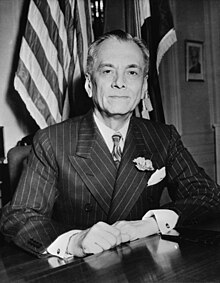Manuel Quezon
|
His Excellency Manuel L. Quezon |
|
|---|---|
 |
|
| 2nd President of the Philippines | |
|
In office November 15, 1935 – August 1, 1944 |
|
| Vice President | Sergio Osmeña, Sr. |
| Preceded by | Re-established (Last title held by Emilio Aguinaldo) as (President of the Philippines) Frank Murphy as (Governor-General of the Philippines) |
| Succeeded by | José P. Laurel, Sr. (de facto) |
| 1st President of the Senate of the Philippines | |
|
In office August 29, 1916 – November 15, 1935 |
|
| Preceded by | Position established |
| Succeeded by | Manuel Roxas |
| Senator of the Philippines from the 5th Senatorial District | |
|
In office October 16, 1916 – November 15, 1935 Served with: Vicente Ilustre (1916–1919) Antero Soriano (1919–1925) José P. Laurel (1925–1931) Claro M. Recto (1931–1935) |
|
| Preceded by | Position established |
| Succeeded by | Position abolished |
| Secretary of National Defense | |
|
In office July 16, 1941 – December 10, 1941 |
|
| President | Himself |
| Preceded by | Teofilo Sison |
| Succeeded by | Jorge B. Vargas |
| Resident Commissioner to the U.S. House of Representatives from the Philippine Islands | |
|
In office November 23, 1909 – October 15, 1916 Serving with Benito Legarda (1909–1913) and Manuel Earnshaw (1913–1916) |
|
| Preceded by | Pablo Ocampo |
| Succeeded by | Teodoro R. Yangco |
| Majority Leader of the Philippine House of Representatives | |
|
In office October 16, 1907 – November 23, 1909 |
|
| Preceded by | Position Established |
| Succeeded by | Alberto Barreto As Majority Leader of the Philippine Assembly |
| Member of the Philippine Assembly from Tayabas' 1st District | |
|
In office October 16, 1907 – October 16, 1916 |
|
| Preceded by | Position established |
| Succeeded by | Filemon Perez |
| Governor of Tayabas | |
|
In office 1906–1907 |
|
| Personal details | |
| Born |
Manuel Luis Molina Quezon Sr. August 19, 1878 Baler, El Principe, Captaincy General of the Philippines (now Baler, Aurora, Philippines) |
| Died | August 1, 1944 (aged 65) Saranac Lake, New York, United States |
| Resting place | Quezon Memorial Circle, Quezon City, Philippines |
| Nationality | Filipino |
| Political party | Nacionalista Party |
| Other political affiliations |
Democratic Party |
| Spouse(s) | Aurora Aragón |
| Relations | Manuel L. Quezon III (grandson) |
| Children | Ma. Aurora Quezon Maria Zeneida Quezon-Avanceña Manuel L. Quezon, Jr. Luisa Corazon Paz Quezon |
| Alma mater |
Colegio de San Juan de Letran University of Santo Tomas |
| Profession | Lawyer, soldier, politician |
| Religion | Roman Catholicism |
| Signature | |
| Military service | |
| Allegiance |
|
| Service/branch |
Philippine Revolutionary Army Philippine Commonwealth Army |
| Years of service | 1899–1900 1941–1944 |
| Rank | Major (1899–1900) |
| Battles/wars |
Philippine–American War World War II * Philippines Campaign (1941–1942) * Japanese Occupation of the Philippines (1942–1945) |
|
Presidential styles of Manuel L. Quezon |
|
|---|---|
| Reference style | His Excellency |
| Spoken style | Your Excellency |
| Alternative style | Mr. President |
Manuel Luis Quezón y Molina (Spanish: [ma'nwel ˈlwis keˈson] : August 19, 1878 – August 1, 1944) was a Filipino statesman, soldier, and politician who served as president of the Commonwealth of the Philippines from 1935 to 1944. He was the first Filipino to head a government of the entire Philippines (as opposed to the government of previous Philippine states), and is considered to have been the second president of the Philippines, after Emilio Aguinaldo (1897–1901). Quezon was a Spanish Filipino, with both his parents being Filipino mestizos.
Quezon was the first Senate president elected to the presidency, the first president elected through a national election, and the first incumbent to secure re-election (for a partial second term, later extended, due to amendments to the 1935 Constitution). For pushing Commonwealth Act No. 184 that established the National Language Institute and a consequent Philippine national language, Quezon has been tagged as his country's "Father of the National Language".
During his presidency, Quezon tackled the problem of landless peasants in the countryside. His other major decisions include the reorganization of the islands' military defense, approval of a recommendation for government reorganization, the promotion of settlement and development in Mindanao, dealing with the foreign stranglehold on Philippine trade and commerce, proposals for land reform, and opposing graft and corruption within the government. He established a government-in-exile in the U.S. with the outbreak of the war and the threat of Japanese invasion.
...
Wikipedia
